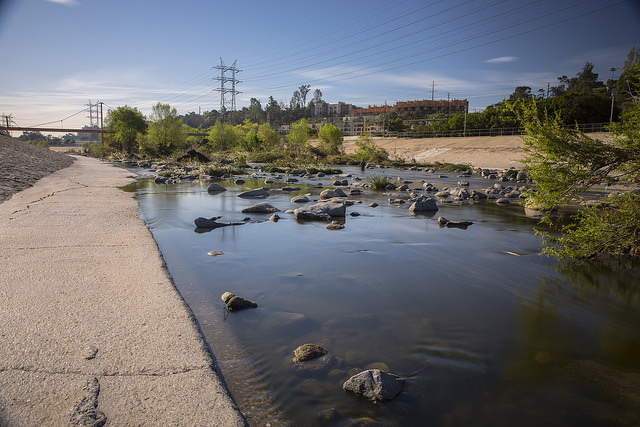Here in LA, we expect to see clean drinking water flowing anytime we turn on a faucet. But have you ever wondered where that water comes from?
Tap water in the City of LA comes from several sources — and about 90% of it is imported. The sources we rely on primarily include:
The Colorado River Basin and the San Joaquin-Sacramento River Delta
Water from these two regions is managed by the Metropolitan Water District of Southern California (MWD). MWD is a water wholesaler (they sell to cities and utility agencies, which in turn sell to the public). Water from these two sources travels through hundreds of miles of canals and pipelines via the State Water Project and Colorado River Aqueduct to reach LA. The State Water Project is the longest aqueduct in the world! Along its route, the aqueduct pumps water 2,000 feet up the Tehachapi Mountains just north of LA, which is the single largest use of electricity in the state of California!
LA Aqueducts
The LA Aqueducts move water from the Eastern Sierra Nevada Mountains, through a very large collection area over the basins of Mono Lake and Owens Valley. After it’s collected, the water travels some 200 miles through concrete-lined canals to finally reach Los Angeles. The LA Aqueduct was the first major water transportation system in California and was designed by the famous LA figure William Mulholland to transport water entirely by gravity–no pumping required! The first of two aqueducts were built in the early 1900’s by what is now the Los Angeles Department of Water and Power (LADWP).
Local Groundwater
Most of the City of LA’s groundwater is stored underneath the San Fernando Valley. Wells owned by LADWP are used to pump water from underground aquifers (storage pockets in rock and soil) to the surface where it is cleaned and added to our water supply.
The San Fernando Basin aquifer has enough space to store water to supply the City’s 4 million residents for 5.9 years. Sadly, chemical contamination from industrial activities in the twentieth century currently prevents us from using most of the wells here.
Recycled Water
Recycled water is local wastewater that has been treated so it can used for non-drinking purposes. During the last 35 years, recycled water has been used to irrigate public spaces like parks and golf courses. In the future, as the network to deliver recycled water expands, it could be used for other applications and at more sites.
Stormwater
Water that falls within LA as rain is called stormwater once it hits the ground. It is then collected throughout the city and absorbed into the ground to replenish local groundwater. It can also be stored in large tanks or cisterns for later use, such as watering landscapes. TreePeople helped launch the City’s first-ever Stormwater Capture Master Plan, which found that between 30% and 45% of the City of LA’s current water demand could be met by capturing stormwater locally. TreePeople is currently working with LA communities and government to make that a reality!
Want to help LA conserve? Learn how to take on sustainable landscaping projects at your home, work or school with our handy online resources!


